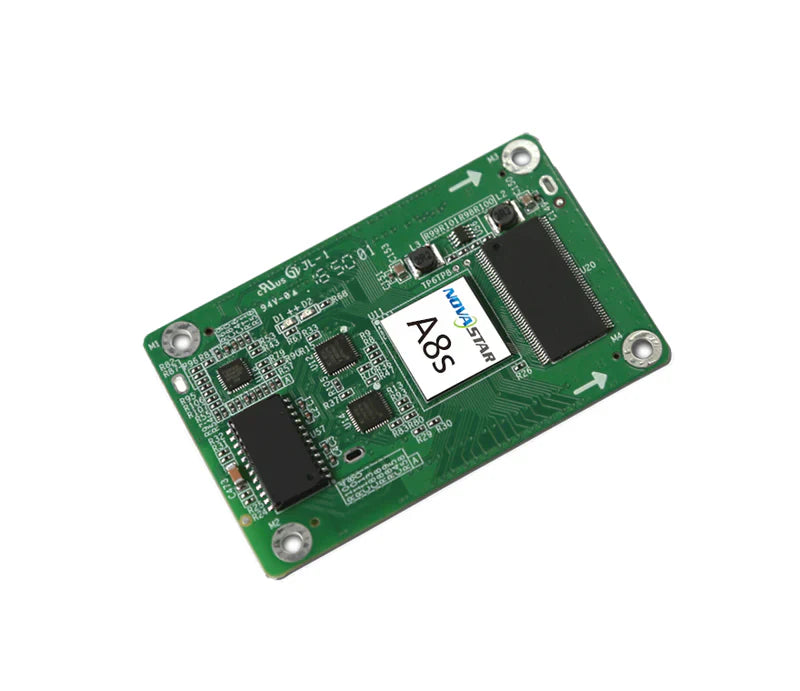When it comes to LED display management, NovaStar is one of the most trusted names in the industry. Known for its reliability, stability, and advanced image processing technology, NovaStar provides a complete ecosystem of LED control solutions—from video processors like the VX series to powerful asynchronous players such as the TB series. Whether you’re managing a rental stage setup, a digital billboard, or an indoor commercial display, understanding how NovaStar’s systems work together can help you achieve stunning visual results.
1. Introduction to NovaStar LED Control Systems
At its core, a NovaStar LED control system manages how content is transmitted, processed, and displayed on an LED screen. It consists of sending devices, receiving cards, and control software—each playing a vital role in delivering smooth, accurate, and high-quality visuals.
-
Sending cards (e.g., MSD300): Transmit video data from your computer or media source to the LED display.
-
Receiving cards (e.g., MRV and A series): Receive and interpret data to control individual LED modules.
-
Video processors (e.g., VX series): Combine scaling, switching, and sending functions into one device for live event or fixed installations.
-
Asynchronous players (e.g., TB series): Allow offline content control, ideal for advertising displays and networks.
2. The VX Series: Real-Time Processing and Integration
The VX Series—including models like VX600, VX1000, and VX16s—is designed for real-time video processing and control. These all-in-one devices integrate video source switching, scaling, and sending functions, which simplifies on-site setup for concerts, exhibitions, and broadcast applications.
Key features include:
-
Multiple input formats (HDMI, DVI, SDI)
-
Seamless switching and scaling
-
Genlock and low-latency synchronization
-
Integrated sending card capability
For users who need plug-and-play performance, the VX series minimizes the need for separate processors and sending boxes—offering an elegant, professional solution for live events or dynamic digital signage systems.
3. The TB Player Series: Smart Asynchronous Control
The TB Player series—including the TB30, TB50, and TB60—is NovaStar’s answer for asynchronous display control. Instead of requiring a constant computer connection, TB players allow you to upload, schedule, and update content remotely, making them perfect for advertising, retail, and public information displays.
Highlights:
-
Supports 4K playback (depending on model)
-
Cloud-based management via ViPlex Express / ViPlex Cloud
-
Wi-Fi, Ethernet, and optional 4G connectivity
-
Time and brightness scheduling for energy efficiency
When combined with receiving cards and NovaLCT software, the TB series offers a streamlined way to manage LED networks efficiently across multiple sites.
4. MRV & A Series Receiving Cards: The Brains of Your Display
The receiving card is the core component that determines how precisely your LED modules render images. NovaStar’s MRV series and A series cards are engineered for high reliability, load capacity, and advanced calibration features.
-
MRV Series: Known for stable performance and broad compatibility. Models like MRV208, MRV412, and MRV570 are ideal for various pixel configurations and cabinet designs.
-
A Series: Premium options with support for HDR, low grayscale compensation, and 5G transmission. Models such as A5s Plus, A8s-N, and A10s Plus-N deliver superior visual performance for high-end displays.
These cards support pixel-by-pixel brightness calibration, redundant backup, and real-time monitoring, ensuring your display remains vibrant and consistent under all conditions.
5. How to Set Up a Complete NovaStar System
A typical NovaStar setup involves the following components:
-
Content Source → Computer, media player, or TB player
-
Sending Device → VX series processor or MSD300 sending card
-
Receiving Cards → MRV or A series installed in LED cabinets
-
Control Software → NovaLCT (configuration) and ViPlex (asynchronous management)
For example, a digital billboard might use a TB60 player connected to an MSD300 sending card, which distributes signals to A10s Plus-N receiving cards inside the display cabinets. With NovaStar software, users can fine-tune brightness, color, and refresh rate for optimal results.
6. Recommended NovaStar Components for LED Displays
|
Product |
Description |
Link |
|
MRV208-1 |
256×256 pixels, stable HUB75 receiving card for standard LED cabinets. |
|
|
MRV412-1 |
512×384 pixels, 24-group RGB parallel controller board. |
|
|
MRV416-1 |
512×384 pixels, 32-group RGB data controller for complex setups. |
|
|
MRV570-1 |
512×256 pixels, self-monitoring function for secure performance. |
|
|
A5s Plus |
HDR-optimized compact receiving card for high-end LED displays. |
|
|
A8s-N |
High-load, 32-group RGB receiving card for large-format LED panels. |
|
|
A10s Plus-N |
512×512 pixels, 5G-ready control card for future-proof displays. |
|
|
MSD300 |
Sending card for synchronous LED display control and video input. |
7. Conclusion
Whether you’re setting up a small retail LED display or managing a large outdoor billboard network, NovaStar provides a scalable, reliable, and professional control solution. Its VX processors simplify live setups, TB players enable remote asynchronous management, and the MRV/A series receiving cards ensure image precision and long-term stability.
By understanding how these components work together, you can build an LED display system that not only performs flawlessly but also delivers vivid, lifelike visuals that stand out in any environment.

